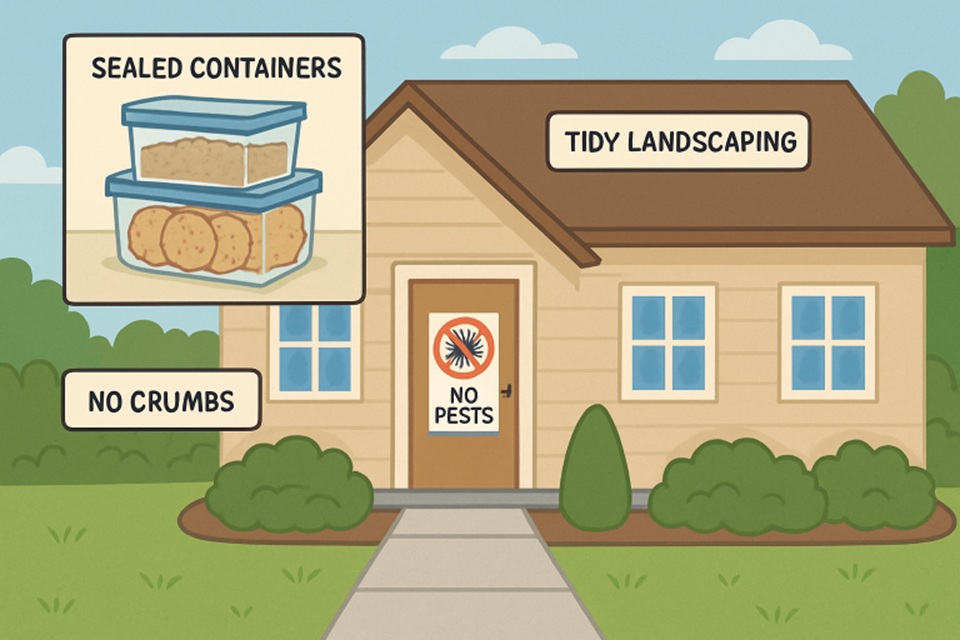Key Takeaways:
- Consistent prevention and fast intervention are fundamental for effective pest control at home.
- Combining practical home maintenance with thoughtful pest management delivers lasting results.
- A basic understanding of pest behavior helps identify problems early, reducing the likelihood of infestations.
- Eco-friendly and proactive approaches are on the rise as homeowners prioritize safer pest management.
Table of Contents
Why Do Pests Invade Homes?
Pests such as ants, rodents, and cockroaches are constantly seeking food, water, and a suitable place to nest. Even the smallest crack in your home’s foundation or a forgotten open food container can act as a welcome mat, especially as seasonal changes drive pests indoors in greater numbers. According to the U.S. Environmental Protection Agency (EPA), understanding the motivations behind pest invasions is key to effective prevention. Homeowners in the Tulsa area, where fluctuating temperatures and wet springs are typical, may experience spikes in infestations as pests search for shelter from weather extremes.
If you’ve found yourself battling recurring pests despite your best efforts, working with a reliable pest control service near Tulsa can offer professional insight and comprehensive solutions designed for local challenges, helping to protect your home year-round. These experts are familiar with the common pests in the area and employ targeted treatments to achieve effective results. Regular inspections and maintenance can prevent infestations before they become serious issues. Trusting local professionals also means receiving personalized advice to keep your home pest-free in all seasons.
Recognizing The Signs Of A Pest Problem
Detecting a pest infestation early can save you a great deal of time, money, and worry. Watch for telltale signs such as droppings, tiny bite or gnaw marks, foul or musty odors, and unexplained holes in pantry items or clothing. Even subtle clues—such as greasy smudges along baseboards or a skittering noise at night—could indicate that unwelcome critters have moved in. Targeted inspections in less-frequented areas, such as under kitchen sinks, behind appliances, or inside attics, are vital for identifying problems before they become severe.
Being vigilant and methodical in your checks will help you spot issues long before a full-blown infestation takes hold. Many pests are nocturnal or hide effectively, so evidence may be easy to overlook without routine observation. This proactive approach not only prevents larger problems but also ensures you spend less on repairs and treatments down the road.
Everyday Prevention Tips To Keep Pests Away
- Seal cracks and crevices along walls, foundations, and window frames to block entry points.
- Keep all food sealed tightly in pest-proof containers, including snacks and dry goods.
- Clean spills and crumbs promptly—especially in kitchens and eating areas.
- Take out trash frequently and always secure lids on garbage bins.
- Repair leaking faucets, pipes, and eliminate standing water to deny pests moisture.
- Keep your landscaping trimmed and free from debris, which can provide hiding spots.
Sticking to these daily habits reduces the likelihood that pests will find your home inviting. According to Better Homes & Gardens, regular cleaning routines and prompt repairs are the most effective deterrents to pest invasions.
Natural Solutions For Eco-Friendly Pest Management
Eco-conscious homeowners increasingly favor natural pest control remedies to limit exposure to potentially harmful chemicals. Essential oils, like peppermint or tea tree, can deter spiders and ants when applied along entryways and windows. Diatomaceous earth, a powdery substance safe for both pets and people when used as directed, is effective against crawling insects such as roaches and fleas. Other methods—like using vinegar for cleaning or cedar chips in closets—add extra layers of deterrence.
While these solutions can provide a meaningful reduction in pest numbers, integrating them with regular cleaning and sealing practices enhances protection. For more insights into effective do-it-yourself strategies, consult resources such as Consumer Reports’ guide on household pest prevention.
When To Seek Professional Help
Despite disciplined prevention, some infestations require expert intervention. Hallmarks of a deeper issue include continuous sightings, nests, or property damage that worsens over time. In these cases, engaging a certified pest technician is crucial to ensure the problem is fully addressed, minimizing risk to your home and family. Professionals utilize integrated pest management (IPM) techniques, which combine targeted treatments with environmentally friendly strategies, to provide personalized and effective service. This approach also reduces dependency on chemicals and supports the health of your home environment.
Child & Pet Safety: Ensuring A Safe Environment
Families with children and pets need to take extra precautions when using any pest management products. Always read labels thoroughly and store chemicals well out of reach. Non-toxic alternatives, such as sticky traps or ultrasonic repellents, provide peace of mind. According to guidance from the Centers for Disease Control and Prevention (CDC), parents and pet owners should choose products labeled safe for use around children and animals, and always follow usage directions strictly. Good communication and education within the household further help prevent accidental exposure.
The Future Of Pest Control: Innovations & Trends
Pest management continues to evolve as new technologies and green initiatives gain traction. Modern advancements include “smart” traps with remote monitoring, eco-friendly baits, and automated devices that detect pest activity and activate countermeasures. The industry is also exploring biological control methods, such as releasing natural predators or using pheromone traps, to control pests with minimal environmental impact. As concerns about climate and indoor air quality grow, expect a continued move toward sustainable, low-toxicity solutions tailored to each home’s unique needs.
Conclusion
Keeping your home pest-free doesn’t have to mean harsh chemicals or endless worry. With practical daily strategies, natural and safe alternatives, and professional assistance when needed, homeowners can address pest threats promptly and sustainably. By staying alert and making informed choices, you can protect your family and enjoy a clean, comfortable home year-round.


